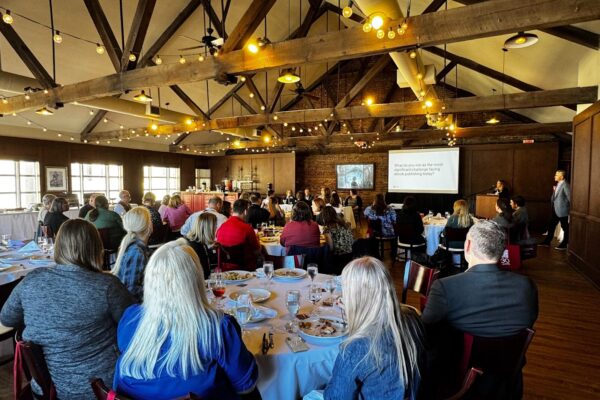
The Metropolitan Museum of Art.
The recent webinar “Academic Insights: Discover How Skidmore College Amplifies Its Special Collections,” hosted by CHOICE and ACRL and sponsored by JSTOR, provided an insightful look into Skidmore College’s initiatives to digitize its special collections. This blog post explores the detailed efforts of David Seiler, Skidmore’s Head of Digital Projects and Collections, as he leads the transition of the college’s archives into the digital age.
Expanding digital access at Skidmore College
Skidmore College has taken significant steps to digitize its collections to increase accessibility for both the Skidmore community and global researchers. This digital transition was spurred by the increasing demand for online access to educational resources, a need that became even more pronounced during the COVID-19 pandemic.
Skidmore’s partnership with JSTOR
In response to these demands, Skidmore partnered with JSTOR to leverage their infrastructure services, including the digital preservation service Portico. The partnership aims to ensure the longevity and accessibility of Skidmore’s digital archives. By integrating these collections into JSTOR’s robust academic network, Skidmore’s resources have been made accessible to a wider audience, spanning thousands of institutions and researchers worldwide.
Skidmore College’s collaboration with JSTOR has been a cornerstone of its strategy to expand and enhance the accessibility of its special collections. The partnership involves multiple facets, each aimed at leveraging JSTOR’s digital infrastructure to meet the specific needs of Skidmore’s archival materials.
Infrastructure and integration
Now that Skidmore’s collections have been integrated into JSTOR’s extensive library of academic journals, books, and primary sources, they gain exposure within a wider scholarly framework. This allows faculty, researchers, and students to link primary historical sources with modern academic insights and analysis.
Digital preservation through Portico
A critical aspect of the partnership is the use of JSTOR’s digital preservation service, Portico. This service ensures the long-term preservation of digital content, safeguarding Skidmore’s collections against the risks associated with digital degradation and technology obsolescence. By preserving its digital archives in Portico, Skidmore guarantees that these resources remain accessible to future students and researchers, irrespective of changes in digital technology.
Enhancing discoverability and accessibility for the future
Skidmore’s partnership with JSTOR also focuses on enhancing the discoverability and accessibility of its collections. By hosting these resources on JSTOR’s platform, the collections benefit from JSTOR’s robust search capabilities, including advanced metadata and full-text search features. This functionality makes it easier for researchers to locate relevant documents within Skidmore’s collections, enhancing academic study and facilitating new discoveries in various fields.
The webinar highlighted several technological enhancements that have improved user engagement with Skidmore’s collections. These include advanced search features, high-resolution imaging, and metadata tagging, which make it easier for researchers to find and interact with the digital archives. The result is a more dynamic and user-friendly research environment that encourages deeper exploration of the materials.
Skidmore is also committed to the preservation of digital formats. By using JSTOR’s Portico service, Skidmore ensures that its collections will be preserved and remain accessible to future generations. This proactive approach to digital preservation is critical in maintaining the integrity of historical documents and supporting ongoing academic research.
The Elizabeth Fisher Adams Collection
A standout example of Skidmore College’s digital initiatives is the Elizabeth Fisher Adams collection.This collection, which was highlighted in the webinar, includes a rich array of documents, photographs, and letters. These items bring to life Elizabeth Fisher Adams’ time in France during the Second World War as part of an ambulance crew.
Since being digitized and integrated into JSTOR, the Elizabeth Fisher Adams collection has seen a noticeable increase in usage. Researchers and educators can now connect this primary source material with other resources, enriching both teaching and scholarly work. The collection supports specific research projects and curriculum development, particularly in courses dealing with 20th-century history, Women’s Studies, and military history.
Impact on research and education
Skidmore’s collaboration with JSTOR has significantly enhanced the research capabilities at Skidmore and beyond. By hosting their special collections on JSTOR’s platform, Skidmore has facilitated a seamless connection between historical documents and contemporary studies. This integration enriches the academic experience, allowing students and scholars to easily transition between analyzing primary sources and engaging with related scholarly articles and books.
David Seiler’s management of the transition highlights Skidmore’s strategic approach to digital curation, emphasizing not only technological adoption but also a commitment to preserving and making accessible the rich history contained within its collections. The success of these initiatives serves as a compelling case study for other institutions navigating similar transitions from physical to digital archives.
A model for academic libraries
The partnership between Skidmore College and JSTOR is an example of how digital tools and collaborative efforts can expand the impact of educational resources. Through this initiative, Skidmore has enhanced its own library’s offerings and contributed to the broader academic community by promoting greater access to research materials.
If you would like to learn more about how Portico can support your library’s digital preservation efforts, request a trial.



